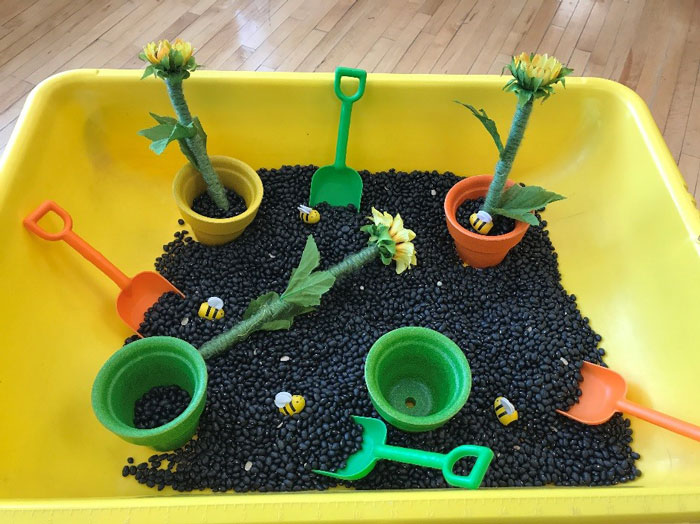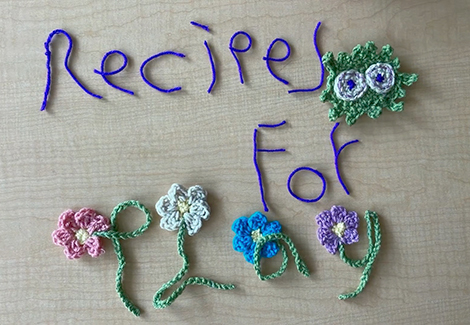As spring grows near, I get an itch to throw out any reminders of winter and to freshen up our programming rooms at the Children’s Museum of South Dakota with bright spring colors and activities.
One of my favorite ways to do this is with a flower planting sensory bin. Sensory bins are a tactile experience contained within a bin or storage tote. They are really easy to bring out on a rainy day and store simply, too.
Did we mention they are really easy to make at home, too?
Benefits of a Sensory Bin
A sensory bin stimulates many senses at the same time. It can improve fine motor skills with scooping and digging, it can support cognitive development such as sorting items by size or color, and it can even be a calming activity.
Sensory bins provide opportunities to explore and learn through hands-on play.

How Do You Make a Sensory Bin?
Since we are going for spring, we will make a flower planting sensory bin. Collect items such as small flower pots, black beans, plastic shovels, and artificial flowers. Many of these items can easily be found at a thrift store or even the dollar store!
After arranging the items in a bin, you and the child in your life can practice planting and replanting flowers.
Sensory bins like this one have so much room for variation that introducing a few new materials to the bin will make it a new experience every time.
More Ideas to Continue the Fun!
- By adding numbers to each pot, your child can work on one-to-one correspondence by placing one flower in the pot that says 1, two flowers in the pot that say 2, and so on. For those who are younger and do not recognize numbers, you can use pictures of 1, 2, or 3 flowers and achieve the same effect.
- Teach stages of life by using artificial flowers that represent a baby plant, an adolescent plant, and an adult plant.
- Add in plastic insects and talk about the roles insects play in pollination.
- Use a variety of flower and pot sizes and have your child work on matching sizes together.
- Give your child a watering can so they can learn to care for plants through pretend play.
This sensory bin can also be used to open the door to outdoor exploration as it gets warmer. You and your child can put what you have learned/observed from your spring-inspired sensory bin into practice and grow real flowers outside!
We’d love to see photos of your sensory bins! Find us on social media and tag #playalongsd to share your fun.




